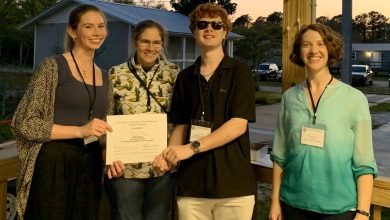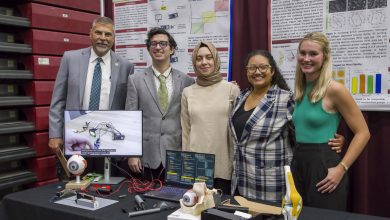Problem-Solving: Tips For an Interactive and Engaging Scientific Presentation
Communication is an essential part of any career and a key part of the scientific process. Scientists occasionally meet in a formal setting at meetings to share their results. Scientists also actively participate within local communities to promote the broader impacts of the research they conduct to general audiences. However, these two audiences are very different with respect to our “take-home message” that is perceived.
For instance, scientists are trained to critique each other’s work using statistical evidence and results from primary literature, while public audiences would be more comfortable with a short engaging video and demonstration. Most scientists know this, yet we still communicate to these two groups using a similar presentation we made for a conference. Part of the reason for this is that many scientists lack training on effectively communicating to the public using clear and concise stories. Here I provide four ways for scientists (or any presenter) to improve their presentation.
Problem #1:
No one likes sitting through a lecture or presentation looking at a slide that has paragraphs of text. Furthermore, no one wants to listen to very technical descriptions that scientists often use (described in image below) to explain their work. Any audience will immediately tune a presenter out once a slide like this appears on the screen. I know I do, and I am a scientist.
Solution #1:
Turn that text into a cartoon, image or video clip. Don’t forget the old saying that, “pictures are worth a thousand words.” We know the work we did, and we can very easily describe our set-up from an image or animation. The figure below is from a presentation I recently gave. I measured various larval crab morphometrics such as lateral, rostral and dorsal spine lengths. However, l did not busy my slide with those terms or a detailed description of how I made those measurements. Rather, I showed an image of the larvae and superimposed arrows to highlight what I was measuring.
Problem #2:
If you and your audience cannot understand the main messages after a three-second glance, then the slide/figure is too busy (see below).
Solution #2:
Show your data in a simple figure. Most audiences are visual learners so a simple figure can highlight your message in a clear way. What is the main message you want the audience to walk away with? What is the most important message? Use a figure that depicts this to the audience. Yes, all the other results are still important, however, a clear message is more effective than a busy graph. Below I provide a few slides I have used to explain complex data sets in a simple manner to my audience.
The relationship (above) between pH and atmospheric CO2 is a complicated chemical equation; however, all my audience needs to know is the main trend/relationship. As Co2 increases, pH decreases. Anyone can get this from this figure in three seconds, even if they do not know chemistry.

Problem #3 and Solution #3:
All presentations are not equal. A presentation made for a scientific audience is not designed for a general audience. When making a presentation, you need to consider your audience and your main message. A scientific talk will need to be re-organized. For example, scientists want to see the evidence for your claims, whereas a general audience is more interested in how your results will impact their daily lives or society. Therefore, we should not be using a “one-presentation-fits-all” philosophy. With that in mind, we need to spend time to re-organize our material to highlight our take-home messages when presenting to a general audience. Below I outline a simple scheme that you should consider before any presentation, whether it be scientific, or for a general audience. What are the two or three messages you want share with the audience? What evidence supports your messages? What relevant examples do you have?
(Featured Photo Credit: Knovelblogs)










